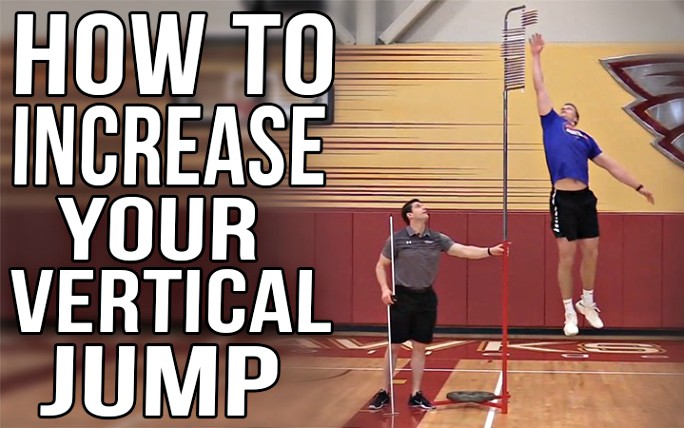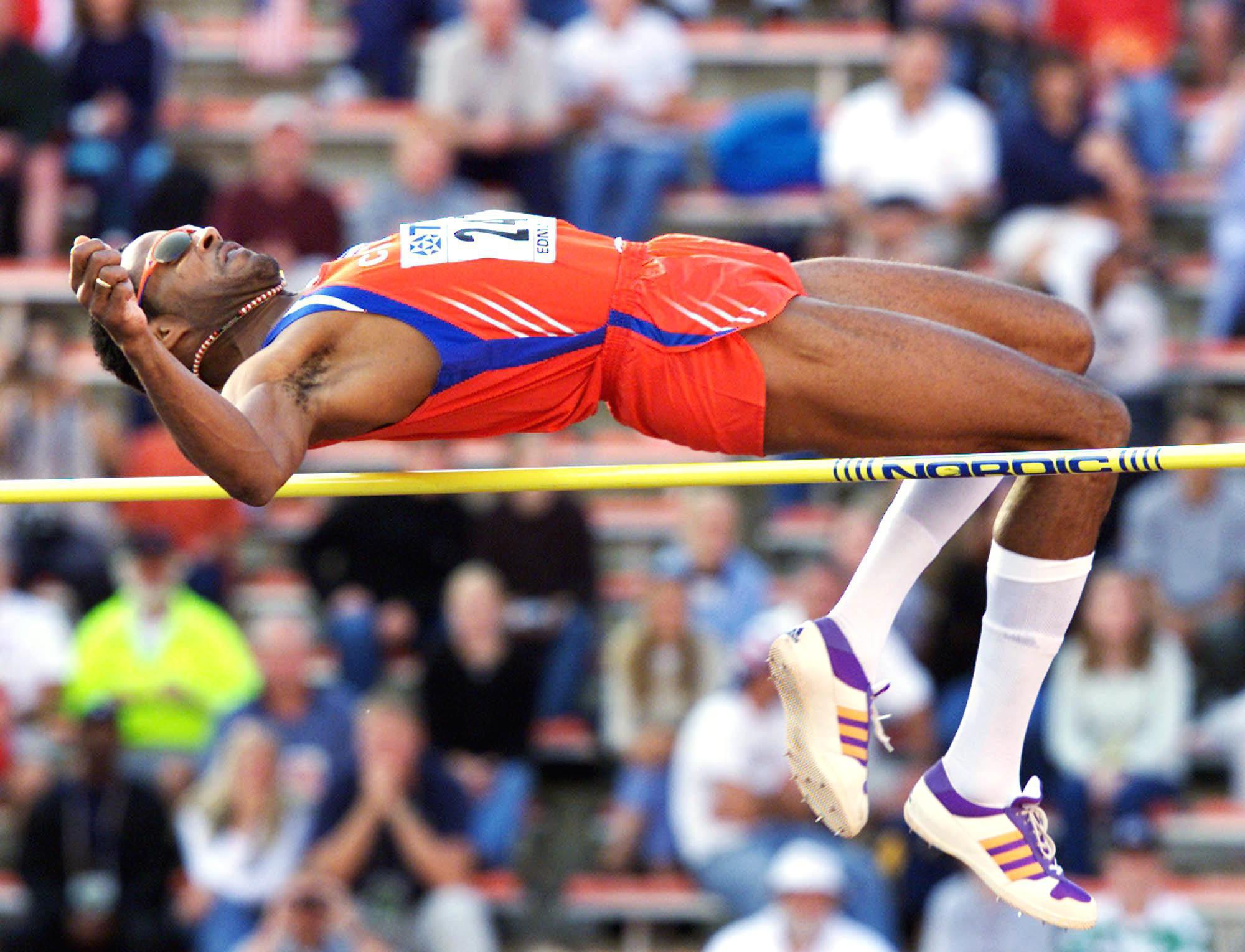What is a Vertical Jump and Why Does it Matter?
A vertical jump is a measure of a person’s ability to leap vertically into the air, starting from a standing position. This athletic skill is crucial in various sports, such as basketball, volleyball, and football, where it can significantly impact performance. Understanding the average vertical jump performance is essential for athletes, coaches, and fitness enthusiasts to set realistic goals, track progress, and develop effective training programs.
Factors Influencing the Vertical Jump Height
Various factors contribute to the vertical jump height, which ultimately impacts the average vertical jump performance. These factors include age, gender, muscle strength, and technique. Age plays a significant role in vertical jump ability, with younger individuals generally demonstrating higher vertical jumps due to their increased muscle elasticity and lower body weight. As individuals age, muscle mass and elasticity tend to decrease, leading to a decline in vertical jump performance.
Gender is another factor that influences the average vertical jump. On average, men typically have higher vertical jumps than women due to differences in muscle mass, body composition, and hormonal profiles. However, individual performance can vary widely within each gender.
Muscle strength, particularly in the lower body, significantly impacts vertical jump ability. Stronger muscles can generate more force, leading to higher jumps. Consequently, incorporating strength training exercises, such as squats and lunges, into a workout routine can help improve vertical jump performance.
Technique is also crucial for maximizing vertical jump ability. Proper jumping technique, including efficient takeoff and landing mechanics, can help athletes achieve greater heights. Focusing on technique can be particularly beneficial for individuals with strong lower bodies who may not be reaching their full vertical jump potential due to improper form.
How to Measure Your Vertical Jump
Measuring your vertical jump is a straightforward process that involves several techniques and tools. The two most common methods for measuring vertical jump height are the standing vertical jump test and the running vertical jump test. The standing vertical jump test requires athletes to stand flat-footed, reach up as high as possible, and mark the highest point they can touch. Next, they jump as high as they can, again marking the highest point they can reach. The difference between the two marks represents the standing vertical jump height.
The running vertical jump test, also known as the approach vertical jump test, involves athletes taking a few steps before jumping, allowing them to generate more power and reach greater heights. Similar to the standing vertical jump test, athletes mark their highest reach before and after jumping to determine their running vertical jump height.
To calculate the average vertical jump, you can take multiple measurements and find the mean value. Using a measuring tape or a specialized vertical jump measurement tool, such as a Vertec or Just Jump mat, can provide more accurate results.
When measuring vertical jump height, it’s essential to consider factors that may impact the results, such as proper warm-up and technique. Ensuring that you perform the tests correctly and consistently will help you accurately assess your vertical jump ability and track your progress over time.
Typical Vertical Jump Heights: By Age and Gender
Understanding the average vertical jump performance for different age groups and genders can provide valuable insights for athletes, coaches, and fitness enthusiasts. Here, we present average vertical jump data for various demographics, comparing them to elite athlete performance and identifying trends. For adult males between the ages of 20 to 29, the average vertical jump is approximately 24 inches (61 cm). Females in the same age group typically have an average vertical jump of around 20 inches (51 cm). As individuals age, the average vertical jump tends to decrease due to factors such as muscle loss and reduced elasticity.
In the adolescent population, males between the ages of 13 to 14 have an average vertical jump of approximately 16 inches (41 cm), while females in the same age group have an average vertical jump of around 14 inches (36 cm). These values increase as adolescents grow and develop, with males reaching their peak vertical jump performance around the age of 19 and females peaking around the age of 16.
Comparing these average vertical jump values to elite athlete performance, it’s clear that there is a significant gap. For instance, the average NBA player has a vertical jump of around 28 inches (71 cm), while elite female volleyball players can reach heights of up to 35 inches (89 cm).
While these averages provide a useful reference point, it’s essential to remember that individual performance can vary widely. Factors such as genetics, training, and technique can significantly impact an athlete’s vertical jump ability, making it crucial to focus on personal progress and improvement rather than solely comparing oneself to average values.
Improving Your Vertical Jump: Techniques and Training
Improving your vertical jump ability requires a well-rounded approach that includes strength training, plyometrics, stretching exercises, proper technique, and nutrition. Here, we offer actionable tips and techniques to help you enhance your vertical jump performance.
Strength Training: Focus on exercises that target the muscles in your lower body, such as squats, lunges, deadlifts, and calf raises. Incorporating these exercises into your workout routine can help increase muscle mass and power, ultimately improving your vertical jump ability.
Plyometrics: Plyometric exercises, such as box jumps, depth jumps, and skipping rope, can help improve explosive power and reaction time, which are crucial for maximizing your vertical jump. Incorporate plyometrics into your training routine 2-3 times per week, allowing for adequate recovery between sessions.
Stretching Exercises: Incorporating dynamic stretches, such as leg swings, high knees, and walking lunges, into your warm-up routine can help improve flexibility and range of motion, reducing the risk of injury and improving your vertical jump performance.
Proper Jumping Technique: Ensuring that you use proper jumping technique is essential for maximizing your vertical jump. Focus on maintaining a strong, upright posture, using your arms for momentum, and exploding through your hips and legs.
Nutrition: Adequate nutrition is crucial for fueling your workouts and promoting muscle growth and recovery. Ensure that you consume a balanced diet rich in protein, carbohydrates, and healthy fats, and stay hydrated by drinking plenty of water throughout the day.
Vertical Jump Training Programs and Products
Various training programs and products on the market can help you improve your vertical jump performance. Here, we review popular options, discussing their effectiveness, features, and user reviews, and providing recommendations for those looking to enhance their average vertical jump.
Vert Shock: Vert Shock is a popular vertical jump training program that focuses on plyometrics, strength training, and technique. The program consists of eight weeks of workouts, with progressively challenging exercises designed to improve explosive power and vertical jump ability. Users have reported significant gains, with many adding several inches to their vertical jump height.
The Jump Manual: The Jump Manual is a comprehensive vertical jump training program that combines plyometrics, strength training, nutrition, and technique. The program includes a detailed workout plan, as well as a nutrition guide and access to an online community for support and motivation. Users have reported impressive results, with many adding 10 or more inches to their vertical jump height.
Skillshare Classes: Skillshare offers several online classes focused on improving vertical jump performance. These classes cover topics such as plyometrics, strength training, and technique, and are taught by experienced trainers and coaches. While not as comprehensive as some other options, these classes can be an excellent resource for those looking to learn new exercises and techniques to improve their vertical jump.
Vertical Jump Training Apps: Several vertical jump training apps are available for both iOS and Android devices. These apps typically include a variety of exercises and workouts designed to improve explosive power and vertical jump ability. While the effectiveness of these apps can vary, they can be a convenient and affordable option for those looking to improve their vertical jump performance.
Vertical Jump and Athletic Performance
The vertical jump is a crucial measure of explosive power and athleticism, playing a significant role in various sports and everyday life. Understanding the relationship between vertical jump and athletic performance can help athletes improve their skills and overall athleticism. Explosive Power: Vertical jump ability is closely tied to explosive power, which is the ability to generate maximum force in a short amount of time. This type of power is essential in sports such as basketball, volleyball, and football, where athletes must quickly accelerate, change direction, or jump to make plays. Improving vertical jump can translate to better overall explosive power, leading to improved performance in these sports.
Versatility: A strong vertical jump can also contribute to versatility in sports, allowing athletes to perform a wider range of skills. For example, in basketball, a player with a strong vertical jump can grab rebounds, block shots, and dunk with ease. In volleyball, a powerful vertical jump can help a player spike the ball with force or block attacks from the opposing team.
Transferable Skills: Improving vertical jump ability can also help athletes develop transferable skills that can be applied to other areas of their lives. For example, the strength, power, and technique required for a strong vertical jump can also be beneficial in activities such as rock climbing, parkour, and even dance.
Overall Athleticism: Ultimately, improving vertical jump ability can contribute to better overall athleticism, helping athletes develop a strong foundation of strength, power, and technique that can be applied to a wide range of physical activities. By focusing on improving vertical jump, athletes can improve their performance in their chosen sport while also developing a well-rounded athletic skill set.
Maintaining Your Vertical Jump: Injury Prevention and Recovery
Preventing injuries and promoting recovery are essential components of any vertical jump training program. By incorporating proper warm-up and cool-down routines, addressing common injuries and setbacks, and employing effective recovery techniques, athletes can maintain long-term vertical jump performance and reduce the risk of injury. Warm-Up and Cool-Down Routines: Proper warm-up and cool-down routines can help prepare the body for exercise and promote recovery. Before engaging in vertical jump training, athletes should perform dynamic stretches and exercises that target the muscles used in jumping. These exercises can include leg swings, lunges, and high knees. After training, athletes should perform static stretches to help reduce muscle soreness and improve flexibility.
Addressing Common Injuries and Setbacks: Vertical jump training can put significant stress on the muscles, joints, and connective tissues of the lower body. Common injuries and setbacks associated with vertical jump training include shin splints, patellar tendonitis, and muscle strains. To reduce the risk of these injuries, athletes should gradually increase the intensity and volume of their training, use proper technique, and listen to their bodies. If an injury does occur, athletes should seek medical attention and allow for adequate recovery time before resuming training.
Recovery Techniques: Effective recovery techniques can help reduce muscle soreness, improve flexibility, and promote long-term vertical jump performance. These techniques can include foam rolling, massage, and compression therapy. Additionally, athletes should prioritize rest and recovery, ensuring that they get adequate sleep and take rest days as needed.
By incorporating these strategies, athletes can maintain long-term vertical jump performance, reduce the risk of injury, and promote overall health and well-being.








